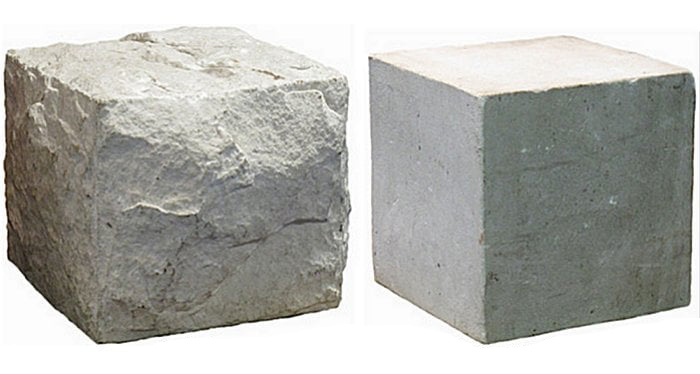
In Freemasonry the rough and perfect ashlars are common symbols. They represent the mason himself in two different forms. They are early versions of the before and after photos that are often used today to demonstrate the visible changes that have occurred.
In operative masonry, the rough ashlar is an unrefined basic cube of stone, that has just been broken free from the quarry.
In speculative Freemasonry this represents the candidate or uninitiated man who is being brought into the brotherhood. The basic shape is visible, but there are lots of rough edges and imperfections visible. The Entered Apprentice, or first degree Mason, is taught to cut these symbolic stones through the initial lessons they learn.
By thoughtful and deliberate use of the gavel and the other working tools, the rough and superfluous parts of stone are being chipped off. And after much work by expert craftsmen, this rough ashlar becomes a perfect one.
This perfect ashlar, also called a dressed stone, is then fit to be placed into the final structure or building that it was hewn for.
In speculative Freemasonry the perfect ashlar symbolizes the final goal that each Master Mason hopes to attain one day. Through dedication of their life to the principals and tenants of Freemasonry, and continuous education in the philosophy and ideals he hopes to get ever closer to that perfect balance of virtues.
The remaining chips and flakes of stone that were broken off the initial rough ashlar are the life experiences that remind us of the long and oftentimes arduous journey we took to improve ourselves and become better men.